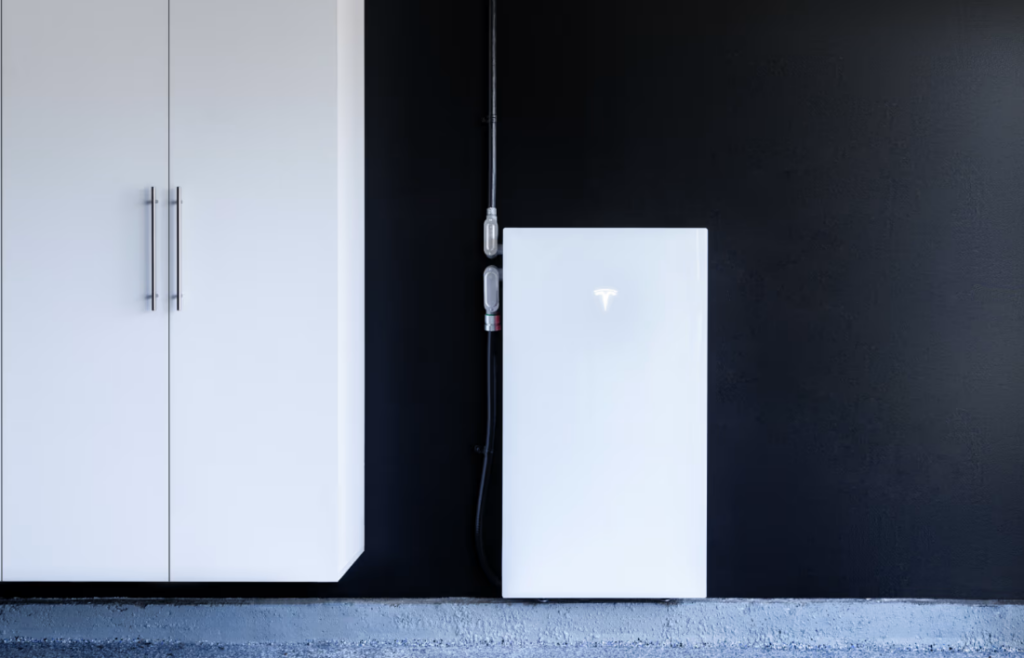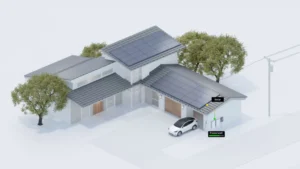Tesla Powerwall First introduced in 2016, Tesla Powerwall has been a game changer in the world of energy chairing. It offers homeowners an efficient storage solution for excess energy generated by their solar array, enabling them to maintain a reliable power supply even when the grid goes down. The Tesla Powerwall is one of the most common batteries for home use and one of the most frequently asked questions about them is “How long do Tesla Powerwalls last? Herein, we will discuss Tesla Powerwall life expectancy, some of the factors that affect it, and how to extend it.

How Long Do Tesla Powerwalls Last?
Tesla Powerwalls are among the most popular energy storage solutions on the market today. As homeowners increasingly seek energy independence, understanding the lifespan and durability of Powerwalls becomes essential. In this article, we will explore the longevity of Tesla Powerwalls, covering various aspects such as battery life, warranty, maintenance, and more.
Understanding Tesla Powerwall Technology
Before delving into how long Tesla Powerwalls last, it’s important to understand the technology that powers them. The Tesla Powerwall is essentially a rechargeable lithium-ion battery designed for residential energy storage. It allows homeowners to store energy generated from solar panels or the grid for later use.
- **Capacity**: The standard Powerwall 2 model has a capacity of 13.5 kWh, allowing for significant energy storage.
- **Efficiency**: The round-trip efficiency is around 90%, meaning you can use a significant portion of the stored energy.
- **Scalability**: Multiple Powerwalls can be installed together to increase storage capacity.
Understanding these features can help homeowners maximize their Powerwall’s lifespan and performance.
Average Lifespan of Tesla Powerwalls
The average lifespan of a Tesla Powerwall is estimated at 10 to 15 years. Several factors contribute to this range, including usage patterns, environmental conditions, and overall maintenance.

ewable energy, knowing how long they last can help you plan effectively for the future.
Battery Cycle Life
The single most important measure of the performance of a Powerwall is cycle life, or the number of complete charge and discharge cycles before it loses enough capacity for it to be significantly degraded. Tesla Powerwalls have about 5,000 cycles of use in them. Here’s a breakdown of what that all means:
Daily Use: If you do one full cycle each day, this is roughly equivalent to about 14 years of life.
Partial Cycles: When you partially discharge the battery, and not use up the entire charge, you can stretch your battery life even further.
Environmental Factors
Outside temperature can positively or negatively affect the longevity of your Powerwall. Now, there are a couple of pretty important things to consider:
Temperature: Tesla Powerwalls operate most efficiently in moderate temperatures. Long heat or cold can degrade battery performance and life.
Humidity: High humidity could also cause long-term damage to the batteries as well.
In general, being careful to keep the Powerwall under a stable environment can extend its lifetime.
The Batteries and Their Warranties and Lifetimes
To help give Powerwall owners some peace of mind, Tesla offers a warranty. The warranty covers:
8 years: The warranty, irrespective of cycle count.
70% Capacity Guarantee: If a given battery retains at least 70% of its capacity during this time,
This warranty suggests that Tesla believes in its product to last, backing the estimates on lifespan.
Don’t Worry, the Warranty Does not Last Forever
Most Powerwalls continue to function well beyond warranty, albeit at reduced performance. Here are some things to know:
Cumulative Capacity Fade**: With successive cycles over many years, higher energy content batteries may show reduced energy storage, affecting storage capacities.
Potential Improvements**: With technology constantly evolving, it may be possible for homeowners to upgrade to better models that are more efficient and offer features not available previously.
Maximize Your Tesla Powerwall Lifespan
follow these best practices to maximize the life of your Tesla Powerwall:
Regular Monitoring
Monitoring the performance of your Powerwall over time in the Tesla app is how you’ll know what it’s up to. Check:
Battery health
Energy usage
Charging patterns
These metrics will enable you to take action if you see anything amiss.
Active Maintenance
Tesla Powerwalls need little maintenance, but you do need to make sure that:
The area where it’s installed is kept clean and dry.
These allow for proper ventilation (i.e., the vents are not blocked).
Since regular checking will be healthy for the longevity of the device.
Optimal Charging Practices
To help your Powerwall last as long as possible, you might:
No Full Discharge: If concern is to keep the battery between 20% and 90% charge when possible.
Use Solar Power: First, charge your Powerwall with solar energy if you have solar panels. That will ease the stress on the battery.
Real-Life User Experiences
Users’ experiences with their Tesla Powerwalls have varied. Here are some common themes:
Positive Feedback
As several homeowners have pointed out:
– Trusted Backup: Users say they feel safe and sound, knowing they have a reliable backup.
Energy Savings**: Numerous individuals have reported lower utility costs, confirming the financial advantages of energy storage.
Challenges Faced by Users
Some users have encountered:
Capacity Reduction**: Some users have seen their battery not hold as much charge as when they were new.
– Tech Issues: A limited subset of users have experienced technical issues, which may affect performance.
These aspects underscore the significance of being aware of the pros and cons of owning such a device.
Comparison with Alternatives in Battery Storage
Tesla Powerwalls webinar video transcript — Comparing to Other Battery Storage Solutions.
|:——————————–:|:————–:|:—————–:|:————–:|
|———————————|—————–|————–|————–|
| Capacity (kWh) | 13.5 | 10 | 12 |
| Cycle Life | 5,000 cycles | 4,000 cycles | 4,500 cycles |
| Warranty | 8 years | 10 years | 8 years |
| Round-trip Efficiency | 90% | 85% | 88% |
This graph shows how well the Tesla Powerwall stacks up, in a number of key categories, and has it performing very strongly.
Frequent Questions Regarding Lifespan of Powerwall
We aren’t going to cover the FAQ section here, but generally, users wonder about:
The long time performance.
What happens to the Powerwall when the battery reaches the end of its life; battery recycling options.
The cost of replacements or upgrades.
This knowledge can assist homeowners in making educated decisions about their energy storage requirements.
To summarize, Tesla Powerwalls provide a longterm and effective storage service and can lastaround 10 to 15 years (or more) based on the specific factors as well as use cases. With the right best practices, users can get the longest life out of their Powerwalls and so assure that they receive the best value and optimal performance for years to come. Are you looking at a Powerwall for energy independence or to invest in ren
How Long Does a Tesla Powerwall Last?
Frequently Asked Questions
What factors influence the lifespan of a Tesla Powerwall?
The lifespan of a Tesla Powerwall can be influenced by several factors, including the number of charge cycles, ambient temperature, depth of discharge, and maintenance practices. Frequent deep discharging can shorten the battery’s lifespan, while maintaining optimal temperature conditions helps prolong it. Proper installation and regular checks also play a significant role in ensuring the system functions efficiently over time.
How many charge cycles can a Tesla Powerwall handle before performance declines?
A Tesla Powerwall is designed to manage approximately 5,000 charge cycles. This translates to about 10 years of use under normal conditions. After reaching this limit, the battery may experience a gradual decline in its capacity, but it can still operate effectively for some time, depending on usage patterns and care.
Can Tesla Powerwalls be replaced or upgraded, and how does this affect longevity?
Yes, Tesla Powerwalls can be replaced or upgraded as newer models become available. When you replace an old Powerwall with a new one, you essentially reset your energy storage capacity and efficiency. Upgrading to newer technology can enhance your system’s performance and longevity, as newer models often feature improved battery chemistry and management systems.
What is the warranty period for a Tesla Powerwall and what does it cover?
The Tesla Powerwall typically comes with a warranty period of 10 years. This warranty covers defects and guarantees that the battery will retain a minimum of 70% of its capacity during this timeframe. This assurance helps users feel confident in their investment and provides a benchmark for performance expectations.
How does temperature affect the lifespan of a Powerwall?
Temperature significantly affects the lifespan of a Tesla Powerwall. High temperatures can accelerate battery degradation, while extremely low temperatures can reduce performance. Ideally, the Powerwall should operate in a temperature range of 32°F to 104°F (0°C to 40°C). Maintaining the battery within this range helps maximize its lifespan and efficiency.
Final Thoughts
Tesla Powerwalls typically last between 10 to 15 years, depending on usage and environmental conditions. They come with a 10-year warranty, which indicates the expected lifespan under normal circumstances.
Regular maintenance and optimal charging practices can help extend their longevity. Therefore, if you’re considering a Tesla Powerwall, you can expect that how long do Tesla Powerwalls last is a significant factor in your investment decision.


